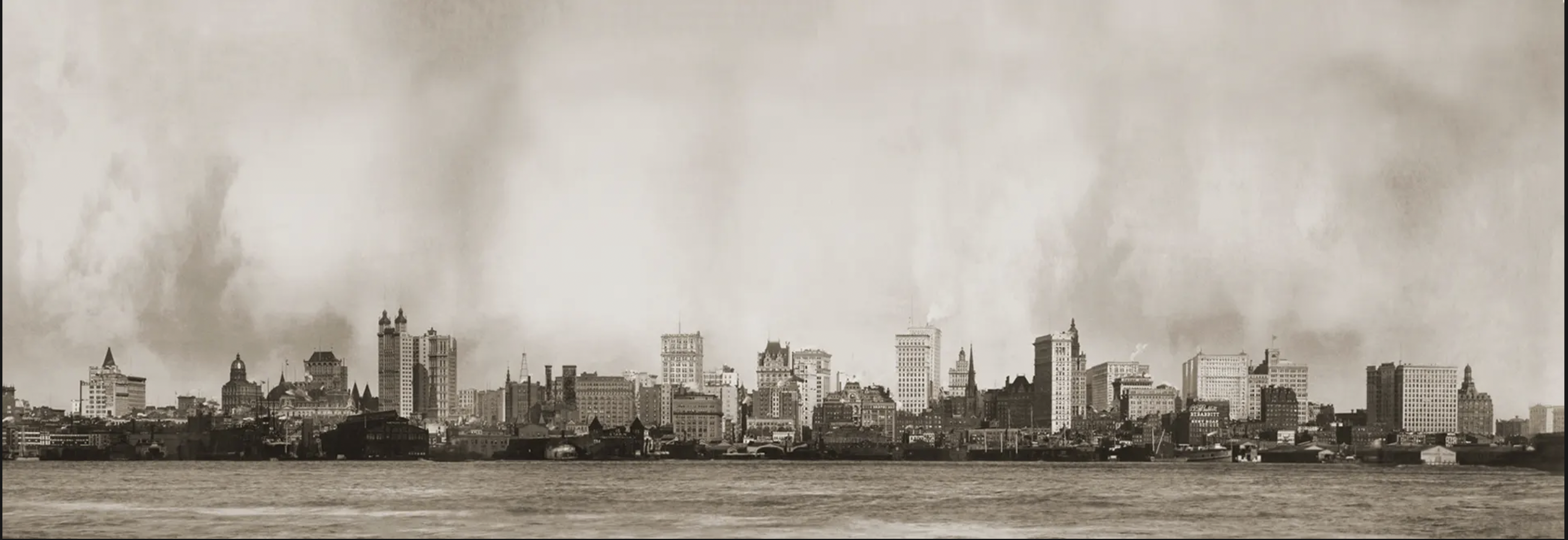
The Kinetoscope of Time
A Hypothetical Site
by Jacqueline M.
To be upfront with the viewers of this website, I had much grander hopes for its design, but was limited due to time constraints. My ideal site would feature many more design elements relating and paying homage to The Kinetoscope of Time’s author, Brander Matthews. Specifically, I was hoping to make a homepage in which, upon entering it, an animation of a curtain appears in the header, which opens to reveal the New York City skyline as it was in the late nineteenth century, with the title The Kinetoscope of Time overlaid. I wanted to represent two of Matthews’ interests: theater, and New York. Matthews was a fan of theater, writing many essays and books about famous playwrights and writing many plays of his own. He also loved New York, choosing to live there most of his life and featuring it as the setting of many of his own works. Indeed, Matthews’ love of and inspiration from theater can be seen in The Kinetoscope of Time, which features exaggerated language from the narrator and long descriptions of the narrator’s surroundings, which are somewhat reminiscent of set descriptions at the beginning of scenes in theater productions.
The Actual Website
As a general format for the website I decided on a home page explaining how to navigate the site and welcoming viewers. At the top of each page in the site there is a menu linking to the other pages of the site. Though I was not able to include all the animations and visuals I had originally hoped for, I was still able to include a nod to Matthews’ love of New York by featuring a picture of the New York skyline from 1902, which I found in The Guardian’s page titled “Rising High: The Evolving Skyline of New York City- Through Pictures”.[1]
Another page of the website features biographical information about Brander Matthews and its relation to and reflection in his writing, specifically The Kinetoscope of Time. This page also provides historical context of the kinetoscope, which is important for the reader’s understanding of the story, as the kinetoscope is a primary symbol in the story.
Another page will feature Nivvi’s creative response and statement of purpose. I decided to put the creative response first and her written statement of purpose below it in order to allow the creative response to be the first thing the user sees, which I think is a nice opportunity for the viewer to interpret it their own way before reading Nivvi’s intent, which may lead to further reflection on what they found most important or interesting about the story.
The final page is where I’ve included this section, in addition to the section “A Hypothetical Site” and “My Intentions”. Though the inclusion of this page may not be necessary for the viewer’s understanding of The Kinetoscope of Time, and could instead simply be turned in to my professor, I wanted to be transparent with the viewers of this site. While I made the site partly to fulfill class requirements, I chose to complete this specific task for the project for other reasons, which are described in the following “My Intentions” section.
My Intentions
The Kinetoscope of Time centers on a narrator drawn to a kinetoscope in a strange shop. When he looks into the kinetoscope, he sees well known scenes from history and famous literary works. He then raises himself from the eyepiece to find a strange man, who reveals he is responsible for the vision the narrator saw in the kinetoscope. The narrator questions whether the man is “time himself”, which the man denies before offering the narrator to “see five of the most important episodes of your past”. When the narrator refuses, the man instead offers to show him his future, on the condition the narrator trades one year of his life for every ten the man shows him. The narrator refuses, even when the man persists, and says what the man would show him are things he “shall know all in good time”. Upon exiting the shop the narrator sees a framed portrait of the strange man in the window.
Originally, I intended to do a different task as part of my final project, but decided to switch to a website based on the themes in The Kinetoscope of Time. From my reading and my additional research, I gathered that the story was a commentary on technology’s potential to do new and incredible things, but not without potential for great harm as well. The kinetoscope was relatively new technology when The Kinetoscope of Time was written, and it offered a new way to view familiar stories. In The Kinetoscope of Time, the narrator is shown visions of past fiction and events before being offered an opportunity to revisit his own past and see his own future. However, there is a price– in order to see his future or past, the narrator must give up his present. The kinetoscope, and the visions the narrator sees through it, come from the same man offering to show him his past or future, linking the object of the kinetoscope to the narrator’s time tradeoff. This connection reminded me of arguments against kids watching too much television instead of playing outside, or the debates surrounding taking photos of beautiful scenes as opposed to simply enjoying them. With technology there is a tradeoff in time, the more time we spend with technology, the less time we spend interacting with our world as it is naturally. When the narrator declines to see his future, he is choosing to let his life unfold naturally, without the input of the man’s “technology” to see the future.
I found the themes of the dangers of new technology interesting. As an MIT student, we are encouraged to strive to create and use the newest forms of technology– technology is even in the name of the school– but the ethics of new inventions and their potential consequences remain an important consideration for my peers and myself. Matthews’ critique of technology still applies over one hundred years later, and as the next generation begins to invent and innovate we must remember to question the potential downsides of what we create. Thus, republishing The Kinetoscope of Time online on a website, which is where many people consume information, seemed the appropriate task for this story.
On the other hand, choosing the website task for the project feels a little ironic. Computers, the internet, and all that have stemmed from them have been widely critiqued as a distraction from the natural world, a source of emotional harm, and a risk to privacy and democracy. In many ways computers and the internet are just the type of technology The Kinetoscope of Time is critiquing. Though I don’t regret my choice to complete the website task, I wonder what Brander Matthews would think of it. Perhaps he would find humor in the use of technology to spread his critique of technology, or perhaps he would find it a sign that I did not take the story’s message and warnings seriously. Either way, I can only speculate, as Matthews is long dead and the steady stream of new technology flows on.
Source List
[1] The Guardian-Rising High: The Evolving Skyline of New York City-In Pictures: https://www.theguardian.com/cities/gallery/2018/oct/19/rising-high-the-evolving-skyline-new-york-city-manhattan-in-pictures
